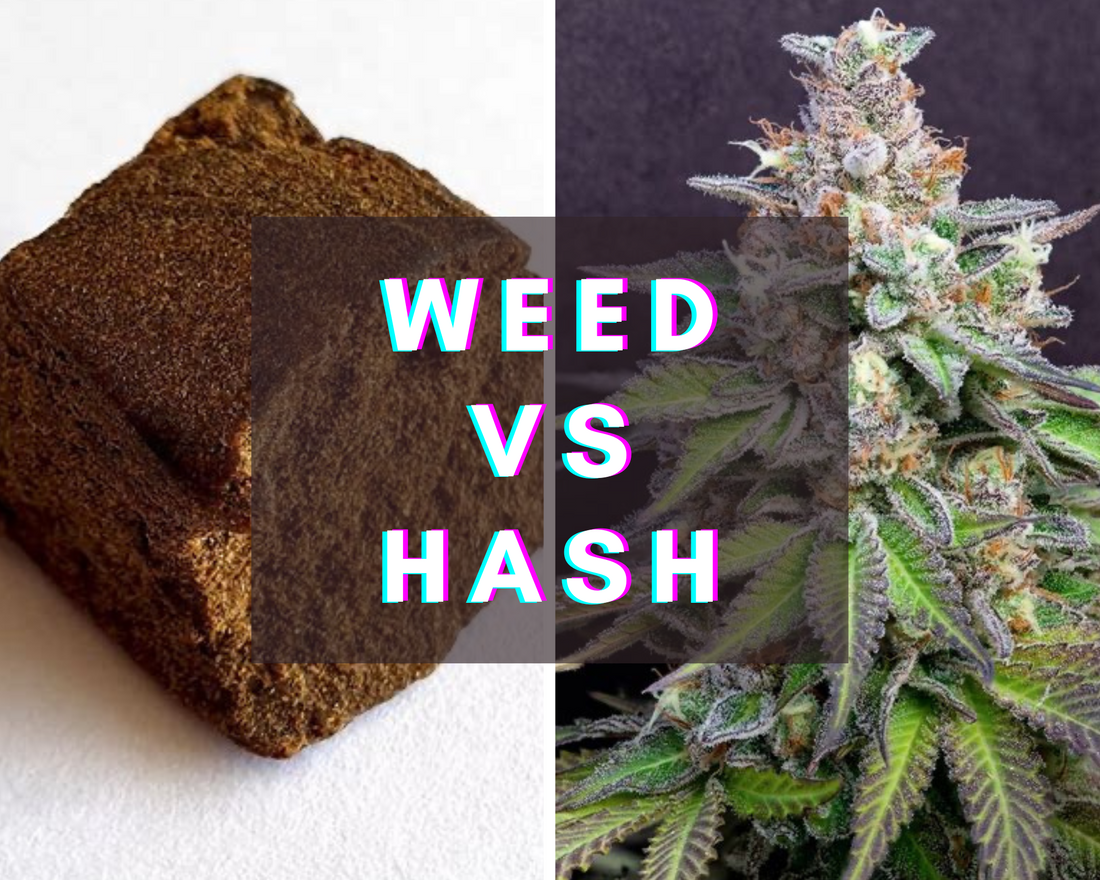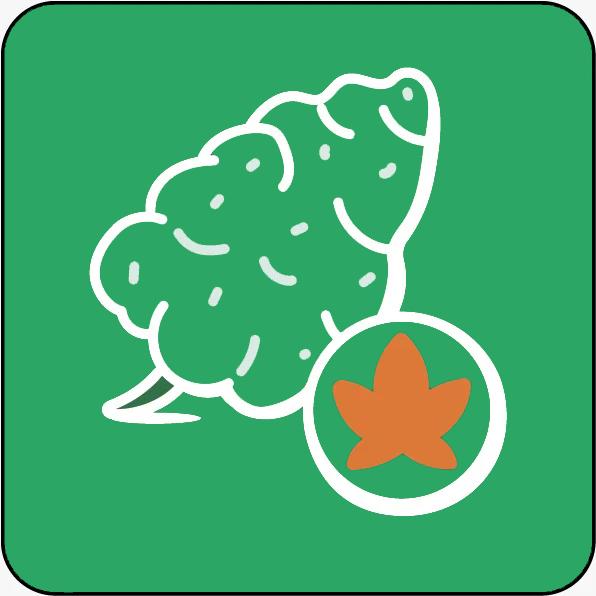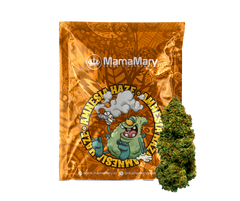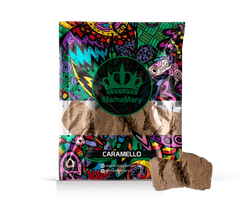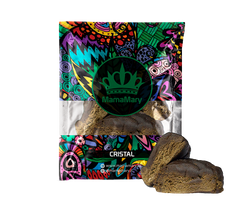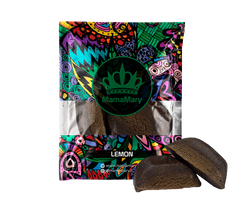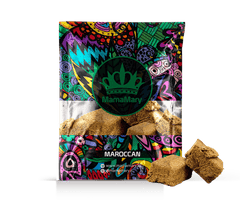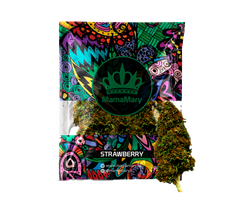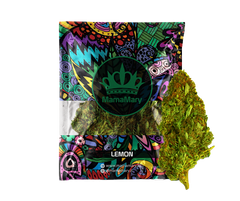Hashish and Marijuana: Here Are the Differences
What is the difference between hashish and cannabis flowers? Both derived from hemp, they differ in several aspects, from composition, aroma, potency and method of consumption.
The cannabis flower contains various parts of the plant, including buds, leaves, and stems. It is harvested and dried before use. It contains varying levels of cannabinoids, including THC (tetrahydrocannabinol) and CBD (cannabidiol).
Hashish is a concentrated form of resin glands extracted from the pollen of the hemp plant. The resin is collected, compressed, and made into a solid or semi-solid form.
It usually has a much higher concentration of THC, which makes it more potent than cannabis flowers. This potency translates into a greater psychoactive effect and a greater beneficial contribution.

Hashish Production vs Marijuana Production
Hashish, also known as hash, is derived from the resin of the cannabis plant. The process of making hashish involves separating the resin glands, also called trichomes, from the plant material to concentrate the cannabinoids and terpenes, which are the active compounds responsible for the effects of cannabis.
Here is a general overview of the traditional methods used to produce hashish:
-
Dry sieving:
This method involves gently separating the trichomes from the plant material using fine mesh sieves. The dried cannabis buds are gently shaken or rubbed on the screens, allowing the resin glands to fall out while the plant material remains on top. The collected resin is then pressed together to form hashish.
- Extraction with ice water:
This technique involves using ice water to freeze the trichomes and make them brittle. Cannabis plant material is agitated in ice water, causing the resin glands to burst and sink to the bottom. The water is then filtered and the collected resin is dried to produce hashish.
- Hand rubbing method:
In some traditional practices, people gently rub fresh or dried cannabis buds between their hands, transferring the resin to their skin. The accumulated resin is then scraped off and collected. This method is labor-intensive and less common than other extraction techniques.
Once collected, the resin glands are usually compressed and shaped into blocks, cakes, or pellets. The resulting hashish can vary in color, consistency, and potency depending on factors such as the cannabis strain used, the extraction method, and the level of purification.
It is important to note that hashish production often involves the use of solvents or physical manipulation to separate resin glands from plant material. Additionally, contemporary methods may involve more advanced techniques such as the use of specialized machinery or solvent-based extractions to produce various types of hashish concentrates with higher potency.
Potency and Effects of Hashish and Cannabis Flowers
When comparing the potency and cannabinoid concentration of cannabis flowers and hashish, the distinction lies in the concentration levels of active compounds, particularly THC (tetrahydrocannabinol).

THC Level in Trichomes of Different Types of Hashish
The THC content of cannabis flowers varies between different strains and varieties of cannabis, but generally ranges from 10% to 25% THC in high-THC strains. This variation also includes other cannabinoids such as CBD and a wide range of terpenes , which collectively contribute to the overall effects and aroma.
On the other hand, hashish is a concentrated form of cannabis, offering significantly higher levels of THC than the flower. With THC concentrations ranging from 20% to potentially exceeding 60% in some potent strains, hashish offers a significantly more intense psychoactive experience upon consumption.
The high potency of hashish comes from the concentration of resin glands (trichomes), which are rich in cannabinoids, particularly THC. This extraction and compression process results in a product with a concentrated cannabinoid profile compared to the more dispersed composition found in cannabis flower.
This higher potency of hashish means that smaller amounts are needed to achieve the desired effects compared to using cannabis flowers. However, careful consideration of dosing is also necessary due to the higher potency of hashish.
Consumption methods:
Weed and hashish offer multiple methods of consumption, each with its own characteristics and effects. Here are the differences:
- Smoking: Hashish can be smoked similarly to cannabis flowers by mixing it with tobacco or marijuana in a joint, blunt, pipe, or bong. It requires heating to release its active compounds for inhalation.
- Vaporization : Vaporizers heat cannabis flowers to produce vapor, providing a smoke-free and potentially less harmful inhalation experience than smoking. Hashish can also be vaporized using specialized devices that heat it to a temperature at which the cannabinoids vaporize but do not burn, providing a smoother inhalation experience than smoking.
- Edibles : Cannabis flowers can also be used in cooking or baking to create edibles, providing a slower onset but powerful, long-lasting effects. Similarly, hashish, once decarboxylated, can be infused into oils or butter for use in cooking or baking. This method creates edibles that offer a delayed onset but powerful, longer-lasting effects.
- Tinctures: The buds can be used to create tinctures, offering a convenient and precise dosing method for oral consumption. Dissolving hashish in alcohol or oil creates tinctures that can be consumed orally, offering precise dosing and relatively fast action when placed under the tongue or added to food or drink.
Hashish in culture
Hashish has a distinct and profound cultural and historical significance compared to regular cannabis flowers. Its concentrated form and powerful effects have woven it into the fabric of societies across regions, shaping its role in cultural practices and historical narratives.
From Nepalese Charas to Lebanese Smoke
Throughout history, hashish has been intertwined with spirituality, social customs, and artistic pursuits. In many cultures of the Middle East, Asia, and Africa, hashish has roots that date back centuries. It was revered for its medicinal, spiritual, and recreational properties, often playing a central role in spiritual or religious ceremonies. The concentrated effects of hashish were believed to induce altered states of consciousness, aiding in meditation, religious rituals, or moments of introspection.
Furthermore, hashish was not simply a substance for personal consumption; it served as a catalyst for social interaction, communal sharing, and relaxation in certain contexts. It played a significant role in social gatherings, promoting a sense of community and camaraderie among users.
Beyond its social and spiritual aspects, hashish has been linked to artistic and creative activities. Some artists, poets and writers attribute their inspiration and imaginative insights to hashish consumption, attributing their creative output to the effects of the substance.
However, the legal and political treatment of hashish often differed from that of regular cannabis flowers due to its concentrated nature. This difference sometimes led to specific regulations and, in some regions, harsher penalties for possession or use of hashish, reflecting its perceived potency and status as a controlled substance.
Overall, the concentrated form and potent effects of hashish have given it a unique and profound significance within cultural, spiritual, artistic, and historical contexts, distinguishing it from regular cannabis flower in its representation, role, and treatment in different societies and civilizations.

Conclusion on the Difference Between Hashish and Marijuana
In the world of cannabis, the difference between hash and weed goes far beyond their appearance. From their composition to their potency and cultural significance, each offers a unique journey into the realm of cannabinoids.
In terms of consumption methods, both hashish and cannabis flowers offer a variety of options, including smoking, vaporizing, edibles, topicals, and tinctures. Hashish can be smoked, vaporized, infused into edibles, or dissolved into tinctures, offering a versatile use beyond smoking or vaporizing cannabis flowers.
Culturally and historically, hashish has a profound significance in spirituality, social customs, and artistic expression in regions such as the Middle East, Asia, and Africa. It has been integrated into spiritual practices, social gatherings, and creative endeavors, often believed to induce altered states of consciousness and foster social connection. The concentrated nature of hashish has led to different legal and political treatment than regular cannabis flowers, with specific regulations and penalties reflecting its perceived potency and controlled substance status.
Overall, the concentrated form and powerful effects of hashish have carved out a unique cultural and historical niche, distinguishing it from regular cannabis flowers in its portrayal, role, and treatment in different societies throughout history.
The choice of consuming flower versus hashish is based solely on the individual preferences and needs of the consumer. With this awareness and the information we have shared, we hope to have clarified any doubts regarding the differences between one and the other.
And what do you prefer, flower or hashish?

